 John Mata Jr.
.
July 13, 2023
.
Features
John Mata Jr.
.
July 13, 2023
.
Features
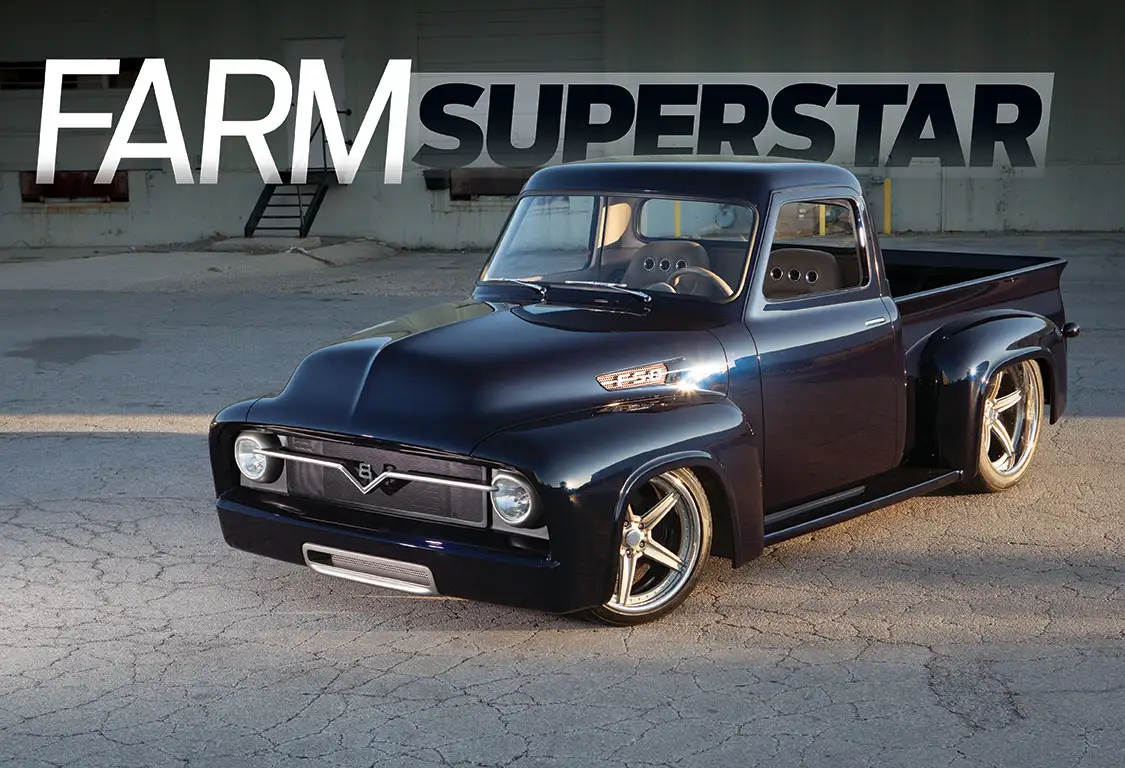
When you’re out at the auto parts store do you ever try to match up the guy in the shop to one of the customized vehicles parked outside? All obvious giveaways aside (a dude wearing a Camaro hat or someone buying one of those “pee on Chevy” window decals), there are sometimes clues that can help make the right connection. Now, before we catch any flack about being creepy, shifty individuals who can’t mind their own damn business, it’s just an all-too-natural thing to do when you’re standing in a checkout line that’s seven deep with customers in front of you who all need to know which new-car scented air freshener actually smells the most like a brand-new car’s interior. A guy needs something to distract himself.
One telltale sign that gives someone away is their size—more specifically, their height. One might figure that a taller gent would be stepping into the jacked-up diesel rig that just happens to be taking up two parking stalls outside, or that a shorter guy might feel more at home in something along the lines of a Fiat. Well, neither of those assumptions is too reliable, because we’ve seen guys tall enough to play center for the local junior college basketball team squeeze themselves into body-dropped mini-trucks.
For guys like Otto Vega (who just happens to stand at 6-foot 4 inches), comfort is everything, but he isn’t one to sacrifice his taste in vehicles for the sake of skating around in cars and trucks that don’t resonate with his personal taste. He has come to grips with the fact that cars (old and new) just weren’t, aren’t and never will be designed with his size in mind. His solution? We’ll get to that in a moment. It wasn’t until he met a certain group of customizers that the answer became clear as crystal.
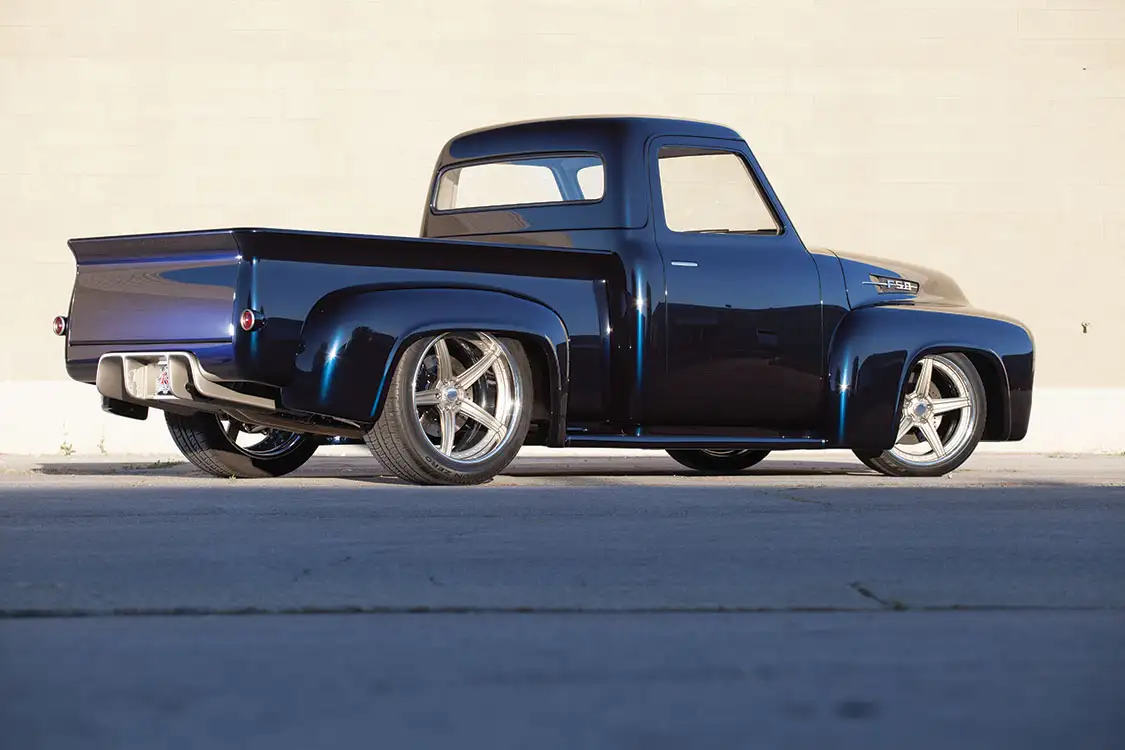
Otto had been in contact with Dave Kindig of Kindig-It Designs about checking out a ’72 Datsun 240Z they had up for sale. Upon arrival, he gave the car a good look, and the two talked about other vehicles and projects that might also be of interest. Otto had mentioned that he had a ’54 Ford F-100 that had been sitting in his garage for a few years and that he had strong intentions about ripping into one day. His very first vehicle was a ’55 Ford pickup, so he just had to get another one that was similar to the one he owned years back. As the visit progressed, Otto and Dave struck up a deal, but not about the Datsun. They had come up with a plan for the ’55 instead. Otto jumped on a spot on the shop’s waiting list, which was a solid year at that point. The truck was shipped to Kindig-It Designs as soon as he got back home. Then the truck sat in the shop for a year before they began any work on it. From there, the Kindig-It crew spent 12 months custom-tailoring the Ford to Otto’s precise measurements.
Not only does the truck feature highly innovative design work and execution, it also maintains that classic nostalgia from Otto’s youth that he was trying so hard to capture with this build.
Okay, maybe that last line sounded like hyperbole, but it really wasn’t. Of course, the truck’s body modifications were shaped to what Otto had in mind, but the truck was actually stretched in length to better fit his stature. The Ford was personalized in a way that most trucks aren’t, and it was all done to achieve a truly custom level of comfort and performance. “Otto wanted to build something he could get in and out of and sit in comfortably,” says Dave Kindig of the truck’s most understated yet huge modification. “We modified the Ford to fit his 6-foot-plus frame, and we had to do it in a way that didn’t look like we simply stretched the truck in overall length, which would have looked odd and disproportionate. Instead, we got the extra length we needed by moving the firewall forward and stretching the wheelbase 8 inches overall: 4 inches through the doors and moving the axle forward 4 inches in the front gave us the extra room we were after.”
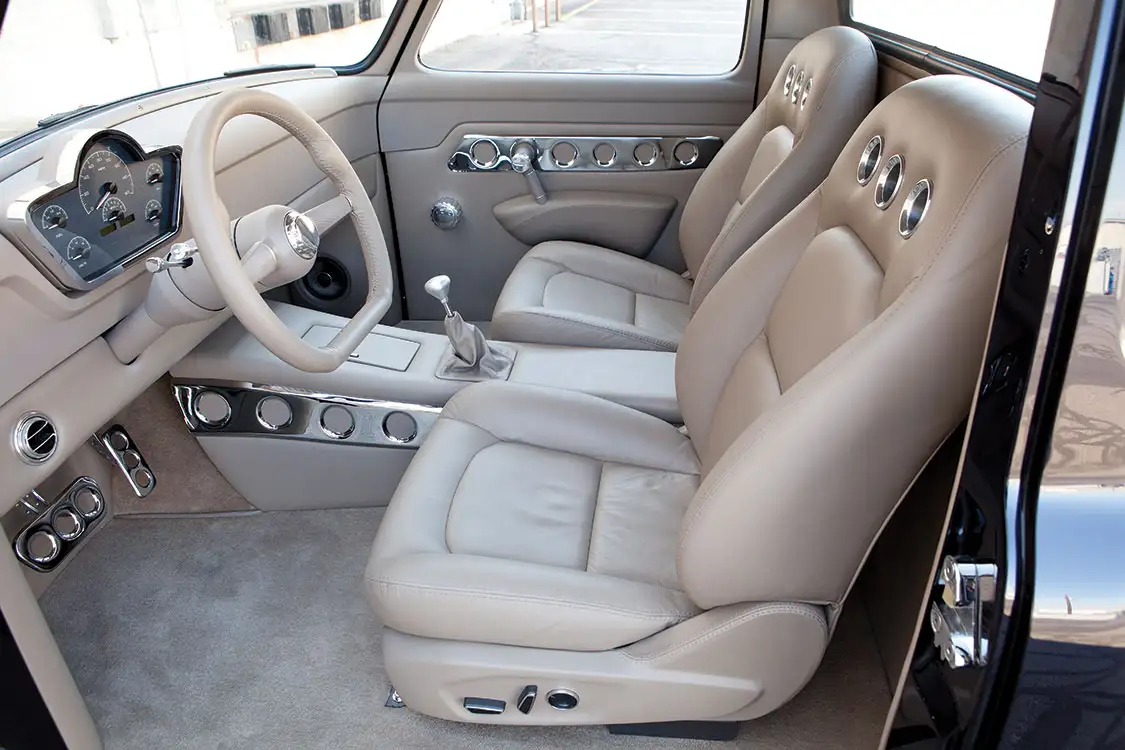
A comfortable fitment only made up half of the equation for creating more room, however. Otto drives his vehicles as they were intended to be driven—hard. And if he doesn’t sit comfortably and doesn’t have adequate space for quick movement, he would be unable to utilize every bit of the performance capabilities his truck has to offer. “Otto is the type of guy who likes to do 120 mph on the turnpike by his home, so the idea of giving his truck the power as well as the space he needs to take advantage of its handling were both equally necessary. We wanted to make sure he could utilize both comfortably,” Dave adds.
But extra legroom is just where the impressive nature of this truck begins. The performance that Dave briefly touched on revolves around the F-100’s power plant, a supercharged 5.0L Ford Coyote engine from Roush Performance. The Bowler 4R70 performance transmission harnesses the engine’s stable of 625 horses with ease and lets Otto rip the truck down the highway at eye-watering speeds. There isn’t one inch of this truck that hasn’t been customized in one way or another, and that is something anyone can see from clear across the street. The interior is out of control, the body mods and paint are as trick as can be, and if you’re lucky enough to catch the truck aired up, you may be able to get a glimpse of the chassis and undercarriage, which is kept absolutely pristine.
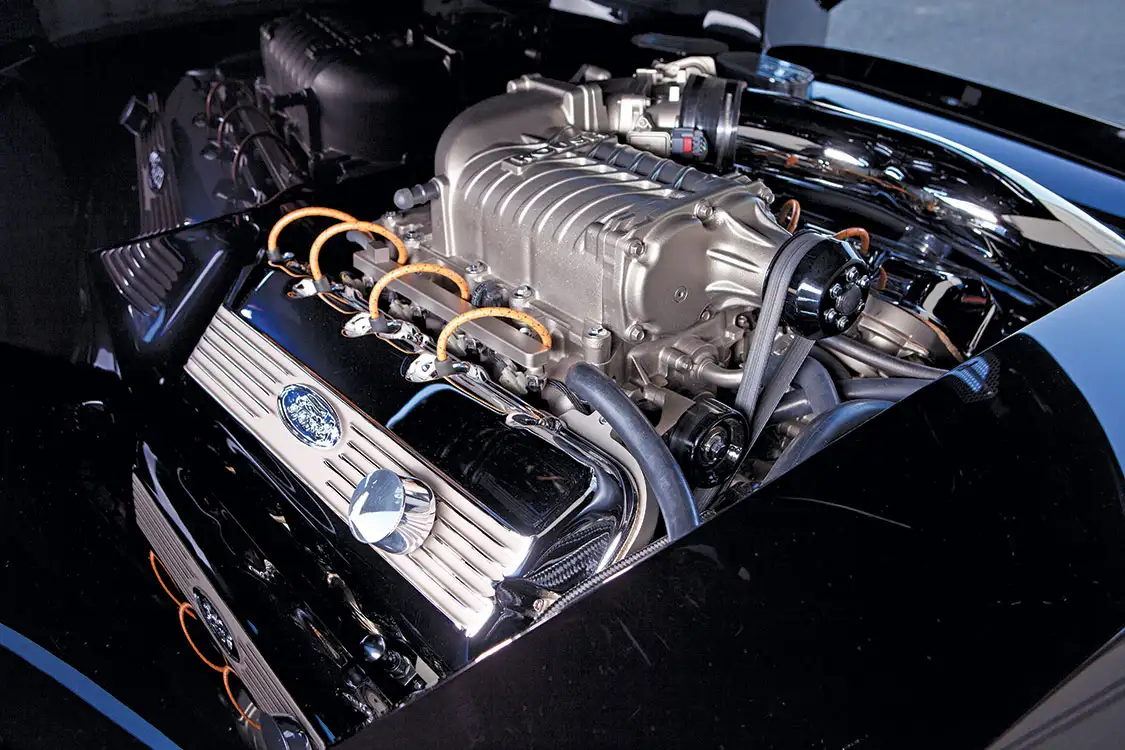
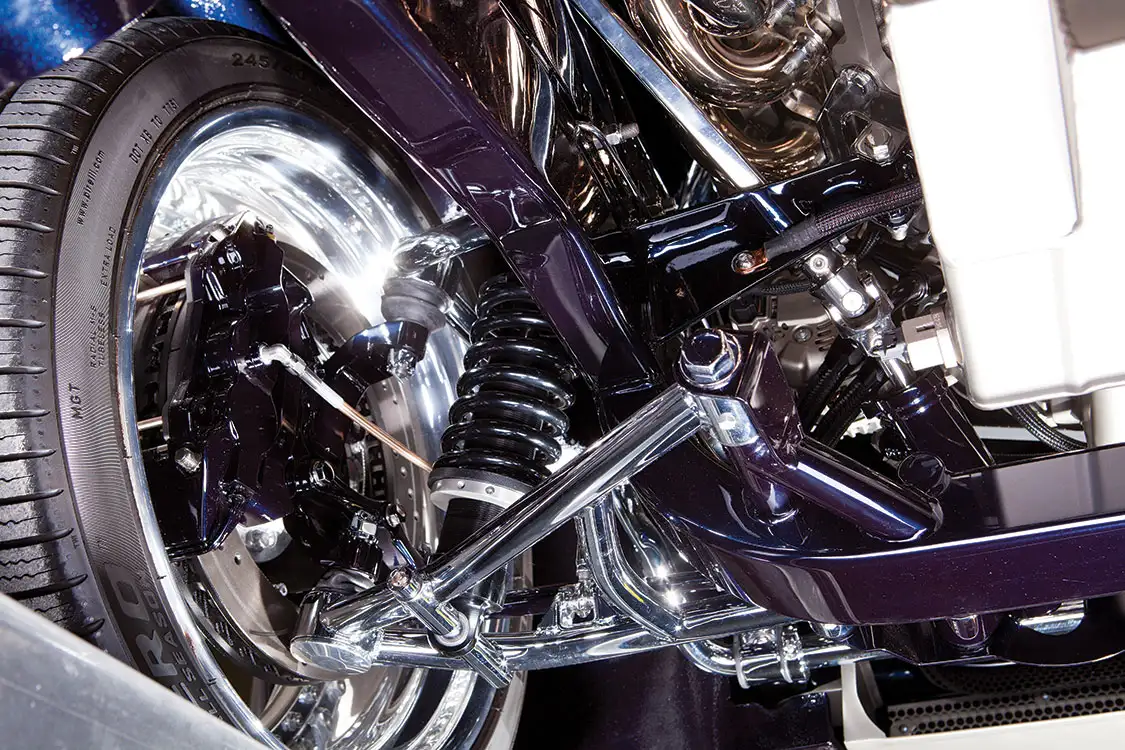
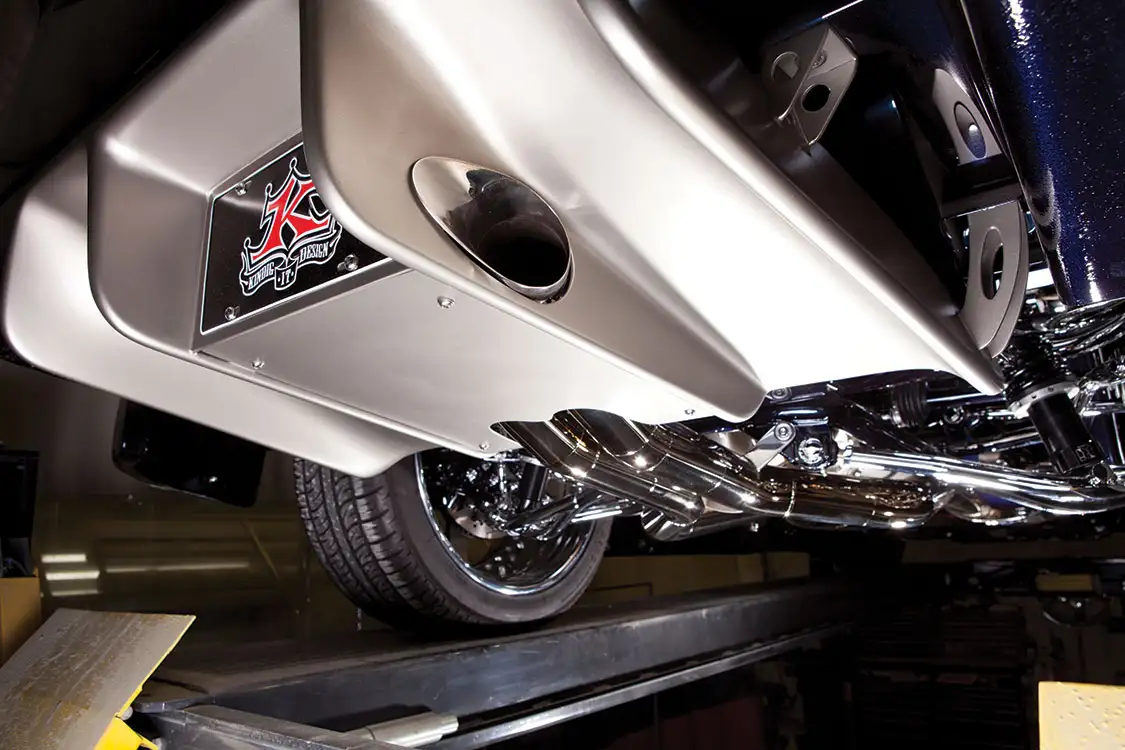
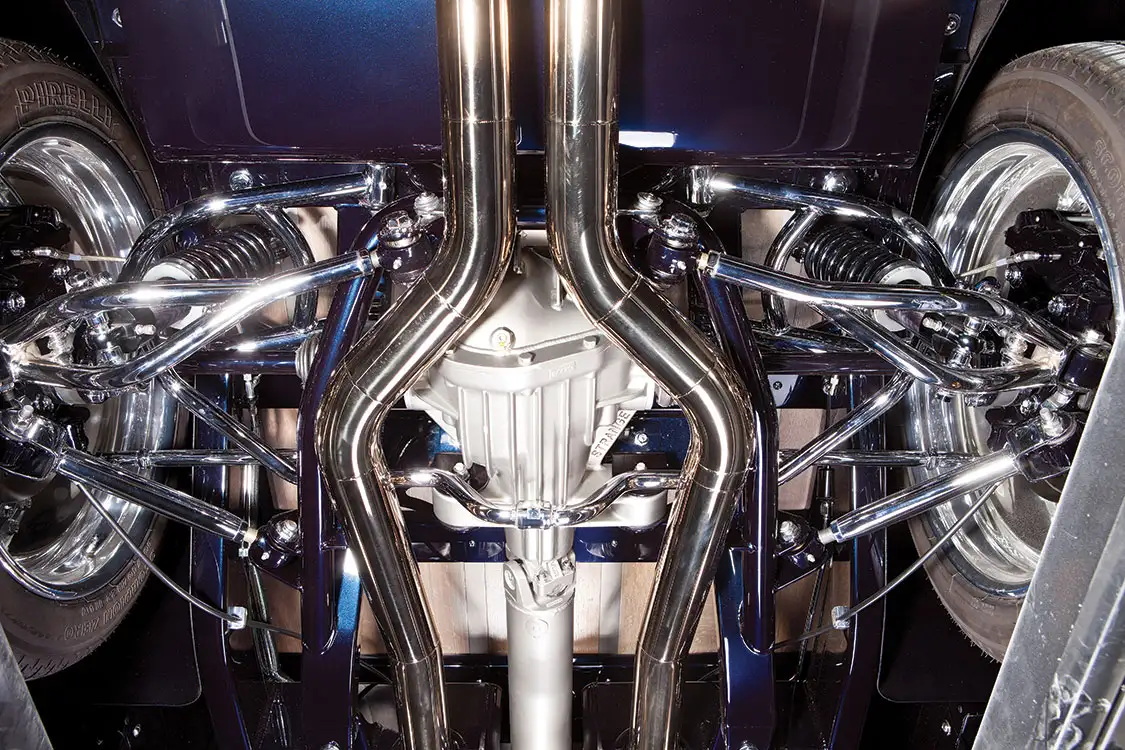
Otto could consider himself lucky if he didn’t find crowds of gawkers surrounding the truck at all times. These would be the people who skip right past the guessing game of matching up drivers to their potential rides and shoot straight for waiting around in the parking lot to have the opportunity to shake the owner’s hand. We can respect this sentiment, but this is assuming that Otto would even dare consider leaving this masterpiece unattended while out mixing with the general public. Some vehicles are best kept in gear with a driver sitting and ready to jet at any given time.
“We helped build Otto’s truck to fit somewhere in the ‘farm truck meets supercar’ category,” Dave goes on to say. If you haven’t dreamed of such a fusion, here is a physical example to help get an idea of what the mash-up could look like. Not only does the truck feature highly innovative design work and execution, it also maintains that classic nostalgia from Otto’s youth that he was trying so hard to capture with this build. Purists as well as those looking to push boundaries with vintage vehicle projects are sure to fall in love with everything this truck stands for.
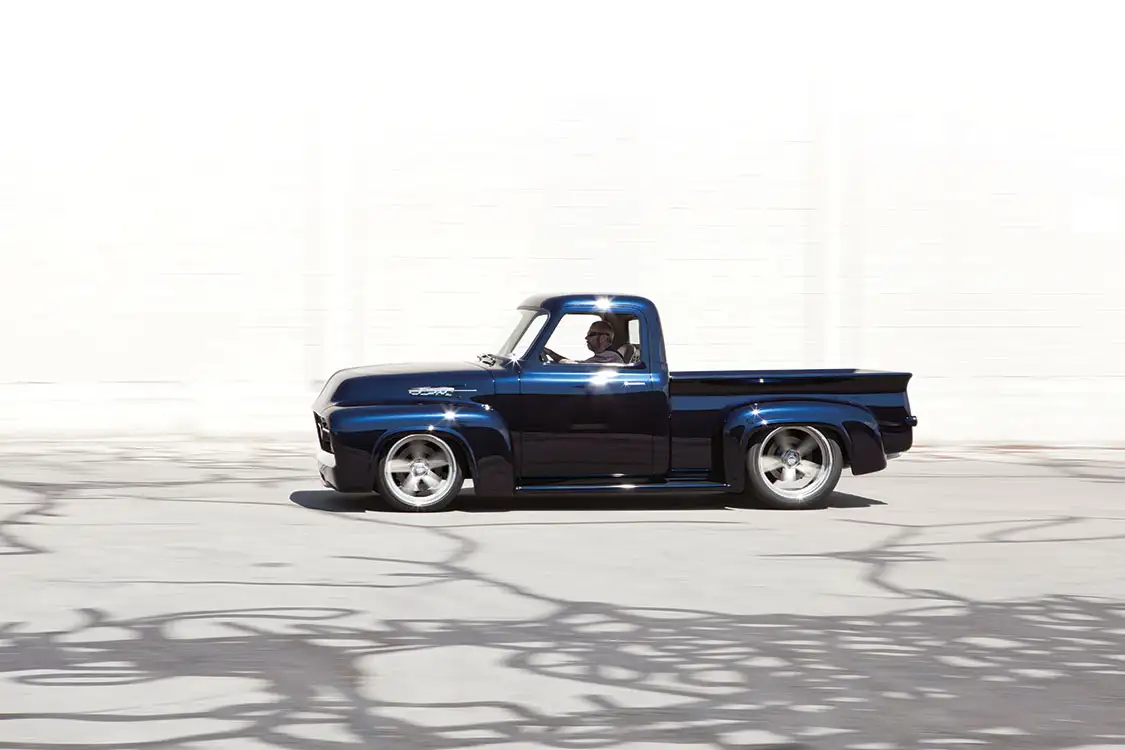
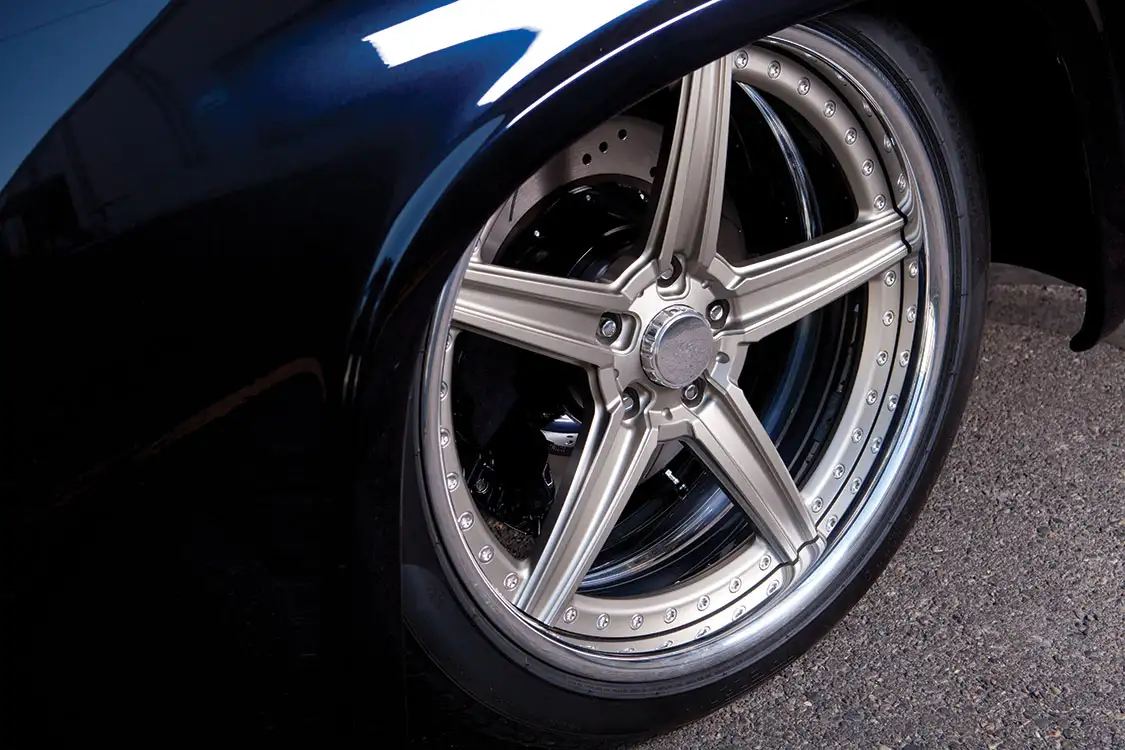
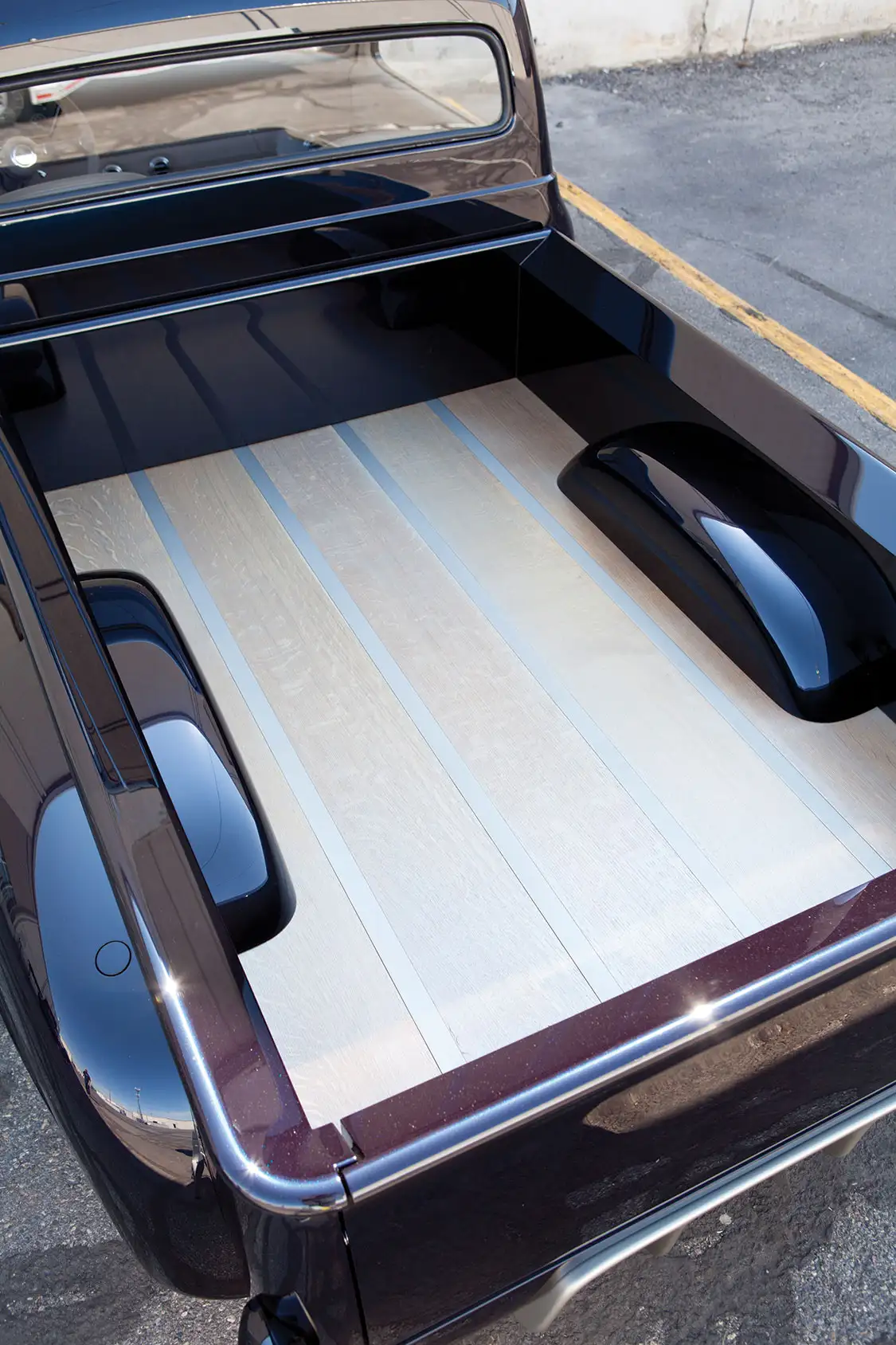
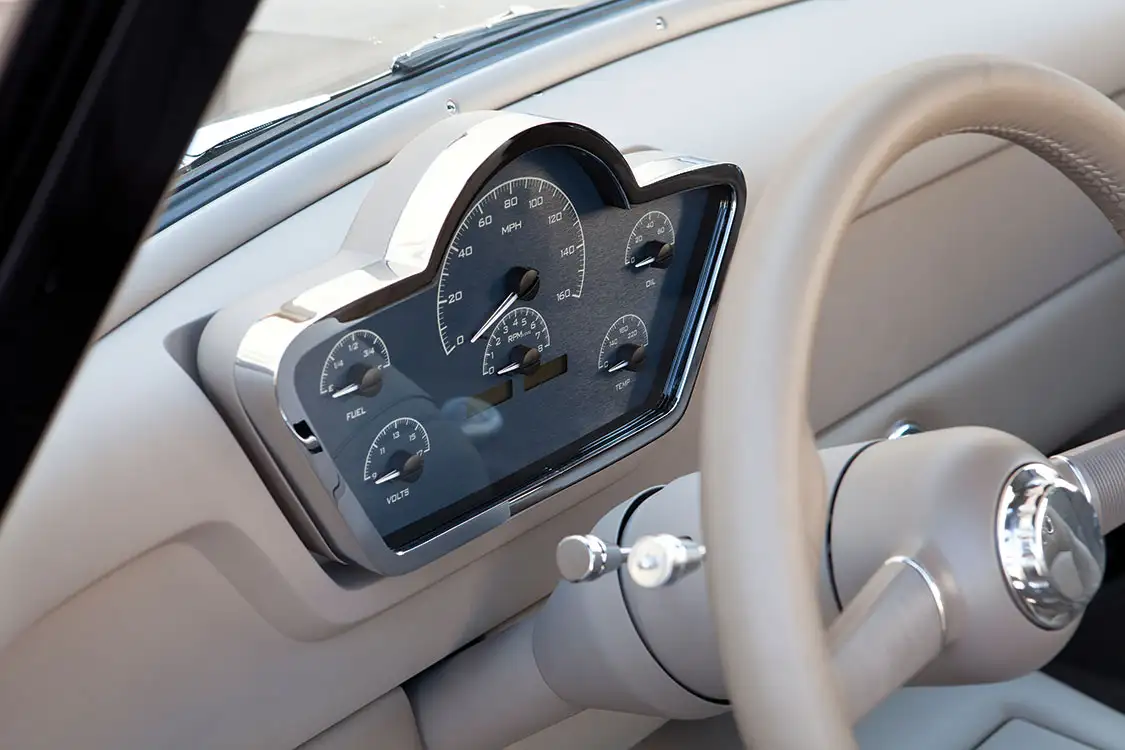
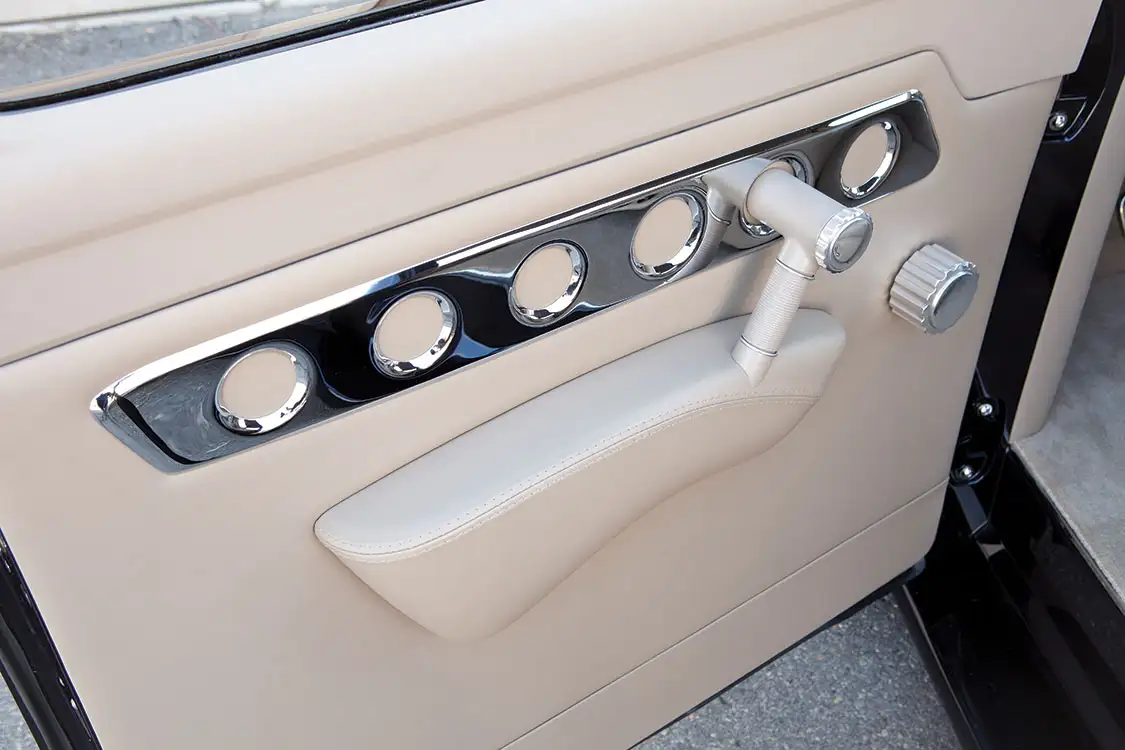
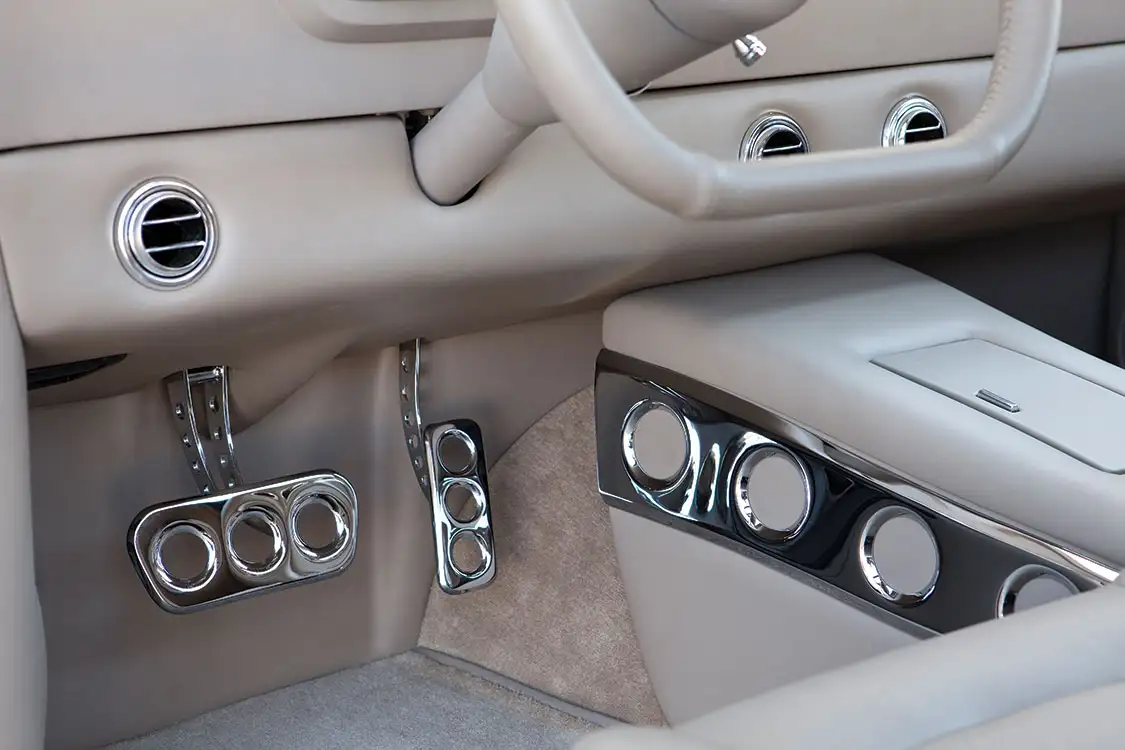
Otto Vega
1954 Ford F-100
Salt Lake City, UT
Shop: Kindig-It Design
Shop: Kindig-It Design
Shop: Kindig-It Design and Painthouse
Shop: JS Custom Interior
Editor’s Note: A version of this article first appeared in the December 2016 print issue of Street Trucks.
What role does Dave Kindig play in the design process of each car?
Dave Kindig is the driving force behind each car’s design at the shop. His process begins with crafting a detailed sketch, which serves as the foundation for every build. These artistic blueprints, meticulously drawn by Dave, are a testament to his creative vision and expertise.
When you look at the collection of these sketches displayed on the art wall, it becomes clear just how many unique and innovative cars have been brought to life over the past 25 years. Dave’s role is pivotal, turning initial concepts into stunning, one-of-a-kind vehicles.
What is the significance of the yellow tape used in Kindig-it Design’s shop?
In the fast-paced environment of Kindig-it Design’s shop, organization is key to managing multiple custom car projects simultaneously. This is where the yellow tape comes into play.
Each vehicle under construction is marked with yellow tape, which serves as a crucial tool for detailed notations. These small strips are scribbled with vital information, ensuring that every team member is on the same page regarding specifications and modifications. By having these clear, visible notes on the cars, the team minimizes errors and enhances efficiency.
The yellow tape contributes significantly to a streamlined workflow. By allowing for easy identification and communication of important details, the team can quickly reference necessary information without digging through paperwork. This helps keep the work environment not only organized but also clean and clutter-free.
These strips of tape function as visual cues for the builders, highlighting specific areas on the cars that need attention or further customization. This visual approach ensures that crucial details are not overlooked, thereby maintaining high standards of quality and precision in every build.
Having cars marked with such notes fosters enhanced collaboration among team members. It allows everyone, from designers to technicians, to understand the project’s progress and contribute effectively to the overall vision.
In essence, the yellow tape is more than just an organizational tool—it’s the backbone of efficient, clear communication and meticulous craftsmanship within Kindig-it Design’s shop.
How does Kindig-it Design handle the interior work for their custom cars?
Kindig-It Design ensures exceptional interior craftsmanship for their custom cars by collaborating closely with JS Custom Interiors. This partnership simplifies the process thanks to their shared location, which allows for seamless coordination and quick adjustments.
No effort is spared to ensure the finished product meets the high standards Kindig-It Design is known for, resulting in interiors that perfectly complement the custom-built exteriors.
What is the connection between Justin Stephens of JS Custom Interiors and Kindig-it Design?
Justin Stephens, the expert behind JS Custom Interiors, is integral to the interior work at Kindig-It Design. His workshop, conveniently located in the same building as Kindig-It, ensures seamless collaboration between the two entities. This proximity fosters a cohesive workflow, allowing for efficient communication and streamlined projects from concept to completion.
In working closely with Kindig-It, Justin ensures each vehicle’s interior is meticulously crafted to match the high standards of the overall design. His expertise not only elevates the quality of Kindig-It’s projects but also simplifies the logistics, making the entire process more efficient for everyone involved.
What is the overall atmosphere and work culture like at Kindig-it Design?
Step into Kindig-it Design and you’ll immediately sense the passion and dedication permeating the air. The team is a tight-knit group of automotive enthusiasts and skilled craftsmen who are deeply committed to their craft. Each member brings a personal love for cars that transforms regular work days into sessions of creative innovation.
The camaraderie among the team members is evident. They work seamlessly together, sharing insights and supporting each other to deliver top-notch results. This cooperative environment enables them to bring complex, custom car designs to life, without the unnecessary drama often associated with reality TV.
The focus at Kindig-it Design is always on producing exceptional vehicles. The TV show that features their work isn’t a gimmick, but rather a platform to highlight the meticulous attention to detail and high standards upheld in the shop. This distinction is crucial: it’s not about theatrics, but about showcasing genuine automotive artistry.
At Kindig-it Design, the love for engineering and creativity takes center stage. Team members are not just employees; they’re automotive aficionados who pour their hearts into each build. This passion translates into vehicles that are not only visually stunning but also mechanically superior.
In short, the atmosphere at Kindig-it Design is one of mutual respect, shared passion, and unwavering commitment to excellence. It’s a place where automotive dreams are turned into reality, fueled by a collective love for the craft.
What happens in the final room before cars are delivered to customers at Kindig-it Design?
At Kindig-it Design, the final room serves a crucial role in the car production process. This is the last checkpoint where vehicles undergo a comprehensive inspection to ensure they meet the highest standards before delivery to customers.
The final room is also a return point for any cars needing post-delivery adjustments, ensuring that every customer’s experience is flawless.
What current projects are being worked on at Kindig-it Design?
At Kindig-it Design, the excitement never stops with a wide array of projects underway, showcasing their dedication to custom automotive craftsmanship.
One standout project includes a modified car featuring a beastly, supercharged, 1,000-horsepower Lingenfelterengine. This engineering marvel is set to cruise on a bespoke independent rear suspension (IRS) system. There’s already a buzz about the final product, and sneak peeks are available in the project’s visual renderings.
Another eye-catching build is a 1957 Oldsmobile, beloved for its distinctiveness. This Olds is equipped with a rare LT5 crate engine, and rides on a meticulously crafted Roadster Shop chassis with full IRS. The project is sure to turn heads, with more images available in their gallery.
Kindig-it Design’s renowned CF1 Corvettes are also a major focus. These custom-built vehicles typically boast a Roadster Shop chassis, a powerful Lingenfelter engine, and Wilwood brakes. Adding to their originality, each car includes comprehensive customization. Excitingly, they are now introducing a convertible version for those seeking the flexibility of a roof and side glass.
Behind closed doors, Kindig-it Design houses a room dedicated to advanced CNC machining. This space gained notoriety as the secret workspace for the award-winning 1953 Corvette, keeping the build under wraps during filming. Here, one can also spot components for the new convertible CF1s.
The journey of each car culminates in the final production room, where vehicles receive last-minute modifications and thorough checks before being delivered to their ecstatic owners. This room also serves as a return station for any post-delivery tweaks. Notable projects in this space include Kevin Hart’s 1970 Challenger, which received some recent adjustments, alongside a freshly completed blue CF1 Corvette ready for delivery.
Kindig-it Design continues to push the boundaries of automotive design and engineering with these diverse and meticulous projects, ensuring every vehicle leaving their shop is a masterpiece.
How does Kindig-it Design incorporate modern technology in their custom car builds?
Kindig-it Design seamlessly integrates modern technology to revolutionize custom car building. They leverage cutting-edge techniques like 3D printing and CNC machining to fabricate highly detailed and precise components. These technologies enable the creation of bespoke parts, enhancing both the functionality and aesthetics of their custom vehicles.
Kindig-it Design is renowned for their meticulous engineering. For instance, their custom builds often feature specialized chassis engineered for performance and durability. These are precisely built using state-of-the-art machinery, ensuring a perfect fit and optimal performance.
Performance is paramount in their creations. Kindig-it Design outfits their cars with high-performance engines and braking systems. The integration of these advanced components is facilitated by their in-house technological expertise, ensuring each vehicle not only looks stunning but also performs exceptionally well.
One of the standout aspects of Kindig-it Design’s approach is their commitment to in-house production. All electrical systems, including wiring looms, are meticulously crafted by their dedicated team. This ensures quality control and customization to suit the unique specifications of each build.
Craftsmanship is at the heart of Kindig-it Design, bolstered by innovative technology. The combination of skilled artisans and cutting-edge tools allows them to push the boundaries of custom car building, resulting in award-winning vehicles.
In summary, Kindig-it Design utilizes modern technology like 3D printing and CNC machining to create custom cars that are both technologically advanced and exquisitely crafted. Their attention to detail and in-house production capabilities set them apart in the world of custom automotive design.
Share Link